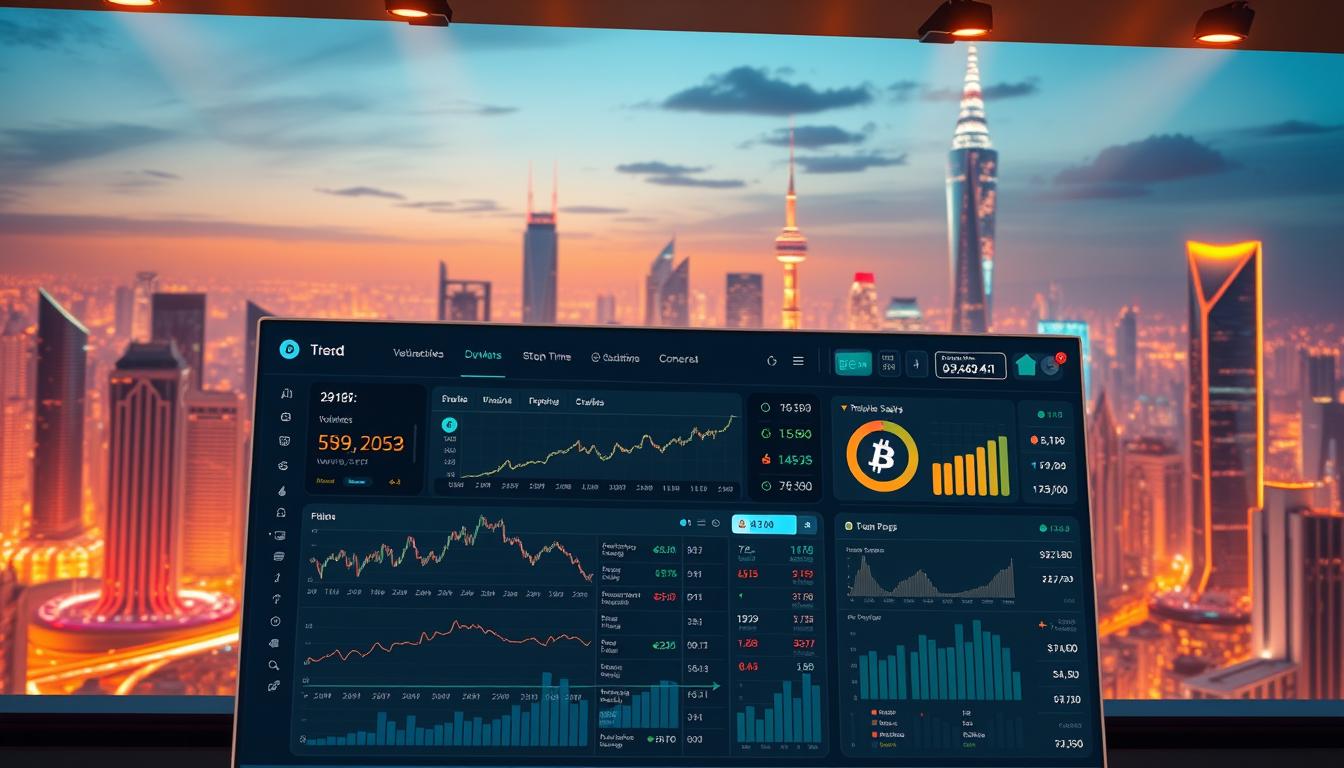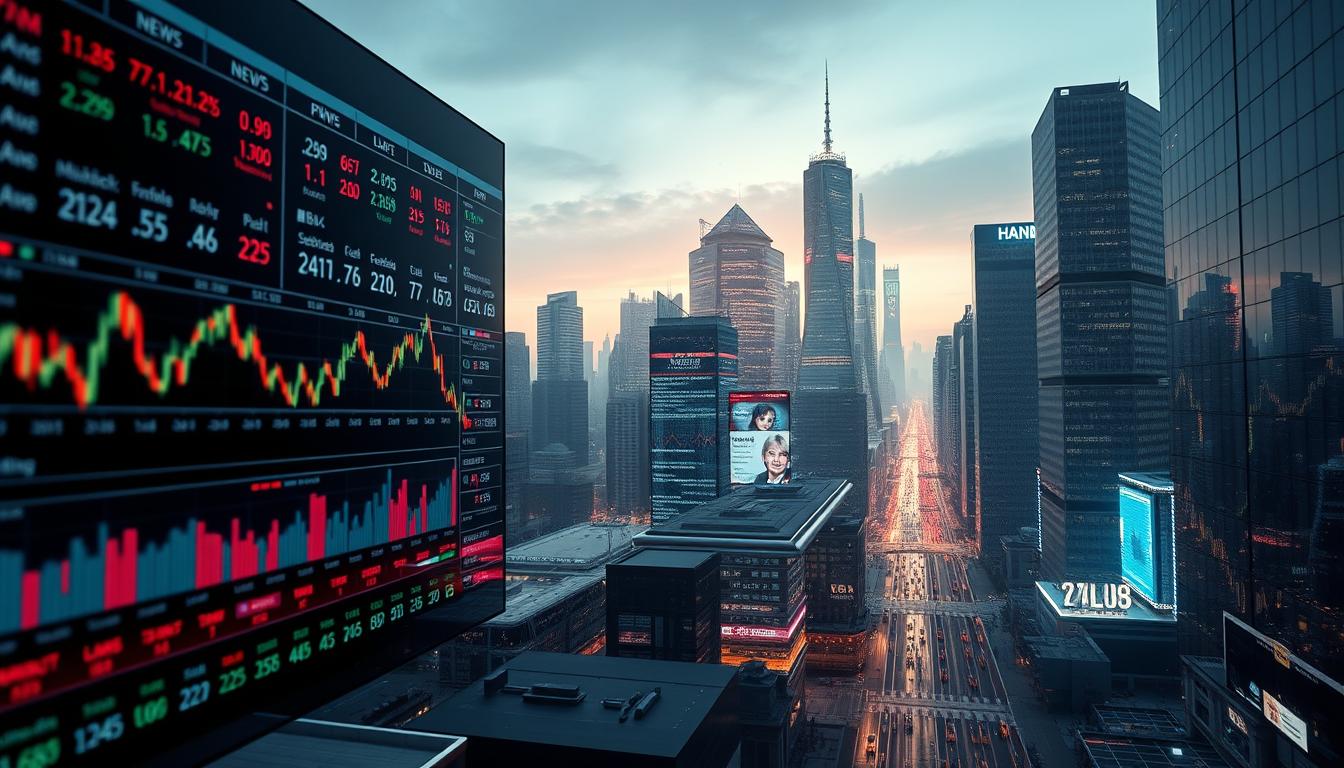Now Reading: Artificial Intelligence NFT Generation Crypto Platforms Explained
- 01
Artificial Intelligence NFT Generation Crypto Platforms Explained
Artificial Intelligence NFT Generation Crypto Platforms Explained
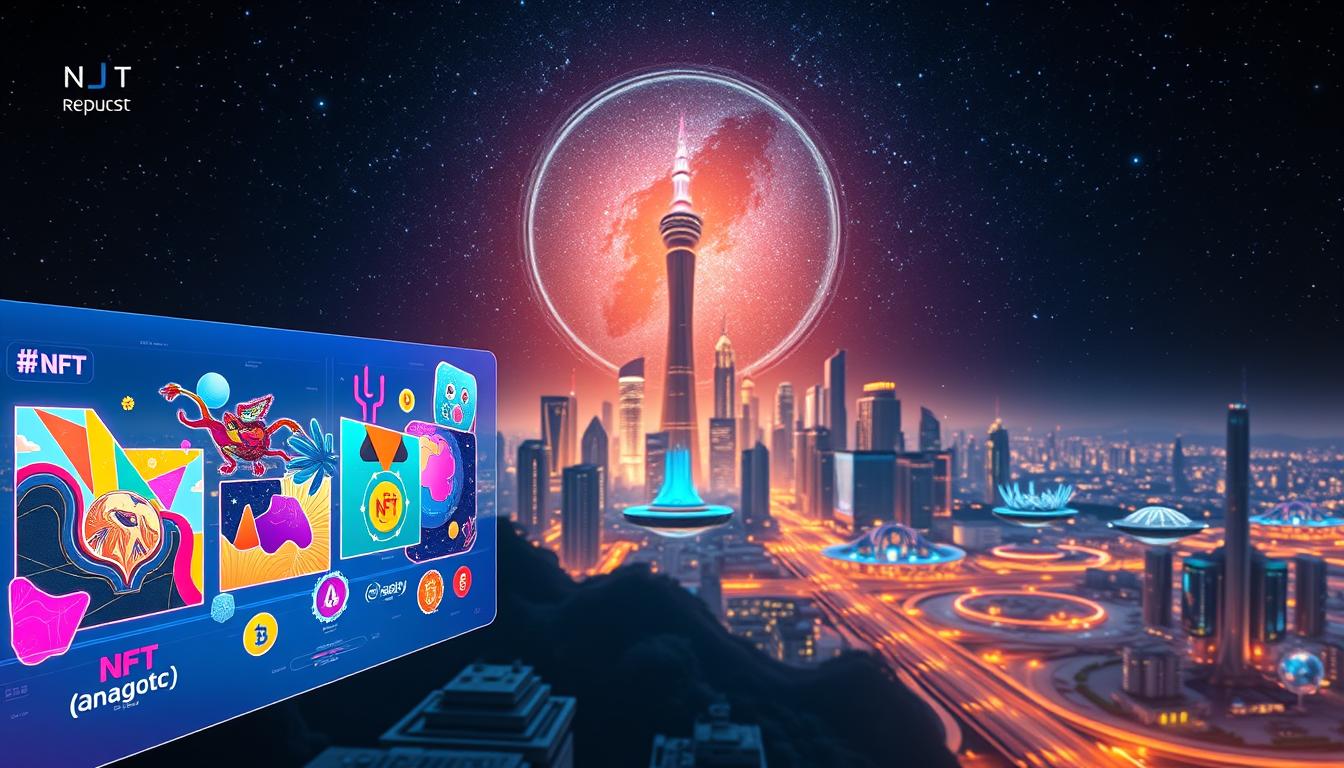
This short guide sets the stage for how modern tools are reshaping nft creation and the wider nft ecosystem in the United States.
The convergence of machine-driven art and digital assets moved from labs into main workflows in 2023. Tools such as DeepAI, NightCafe, Deep Dream Generator, DALL·E, and StarryAI help creators turn ideas into art pieces faster.
Expect clear definitions: we will define the nft ecosystem, show the difference between static and dynamic art, and outline the role of data, models, and algorithms in creation.
You will also get an overview of top tool types—text-to-image, style transfer, and diffusion—and why collectors and marketplaces care about speed, consistency, and customization.
Practical note: these tools augment human creativity, helping teams scale production while keeping a distinct artistic voice.
Key Takeaways
- AI-driven workflows sped up concept-to-mint timelines for digital art and assets.
- Know the main tool categories: text-to-image, neural style transfer, and diffusion.
- Data, models, and algorithm choice shape the final art pieces and value.
- Top services like DALL·E and NightCafe show how creators scale production.
- US marketplaces are actively adopting intelligence-driven tools for reliable workstreams.
Why AI matters for NFTs right now in the United States
Today, smart systems reshape how digital collectibles are made, discovered, and traded across the United States.
Short-term shifts are visible: creation speed, tailored discovery, and faster market signals. Personalization engines study data and past purchases to surface nfts that match a collector’s preferences. Predictive models parse social sentiment to reveal market trends and pricing cues for investors.
Key use cases across creation, curation, and trading
- AI-assisted creation for art and collectibles, speeding concept-to-mint cycles.
- Personalized discovery that matches users to pieces based on preferences.
- Automated trading strategies driven by rapid analysis and sentiment signals.
Benefits for creators, collectors, and platforms
Creators get faster drafts, new styles, and workflow copilots that cut editing time.
Collectors gain clearer pricing signals, market trends visibility, and sentiment insights to guide investors.
Platforms win with dynamic merchandising, improved fraud screening, and data-led marketing that boosts conversion.
| Use case | Primary actor | Core benefit | Impact on nft market |
|---|---|---|---|
| AI-assisted creation | Creators & studios | Faster production, new art styles | Higher supply, varied offerings |
| Personalized discovery | Collectors / users | Better matches, higher conversion | Improved retention, targeted sales |
| Automated trading & analysis | Investors & marketplaces | Faster signals, reduced guesswork | Smarter liquidity, informed pricing |
Bottom line: these tools make the U.S. nft ecosystem more responsive to audience preferences while still requiring prudent risk management in trading and use.
Artificial intelligence NFT generation crypto platforms: what they are and how they work
Creators now rely on trained networks to generate diverse styles, textures, and compositions on demand. These systems use machine learning to turn prompts into cohesive visuals ready for minting.
How machine learning models power creation and generative art
Models such as StyleGAN, BigGAN, VQGAN-CLIP, and CLIP-guided diffusion are trained on large datasets to learn style, form, and texture. Algorithms translate text or seeds into images by iterating toward coherence and detail.
Smart contracts, data, and transactions: tying outputs to blockchain technology
Final files are hashed, metadata is embedded, and smart contracts mint tokens that record provenance and transactions on-chain. Storage choices and royalty logic shape how tokens trade and enforce secondary-market rules.
Risks, capabilities, and ecosystem fit
Capable services add quality controls, prompt guidance, versioning, and export pipelines that match marketplace specs. The tools speed ideation and broaden stylistic range.
Limits include bias, prompt sensitivity, and model drift. Emerging on-chain inference systems (for example, Cortex-style models) promise better auditability and smarter contract analysis for post-sale insights.
Top AI art generators for NFT creation and digital art
Several modern generators stand out for balancing realism, style, and export options. Below are key services creators use to turn ideas into mint-ready art pieces.
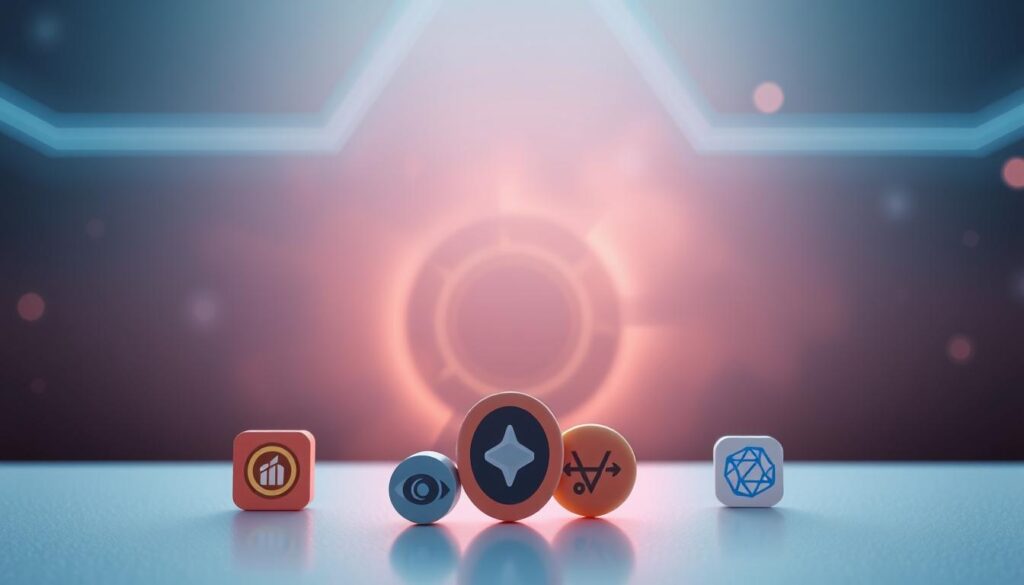
DeepAI
DeepAI (founded 2017) supports StyleGAN for realism, BigGAN for high resolution, and CartoonGAN for stylistic conversion.
Use its controls to tune color, texture, and composition so outputs meet marketplace specs for file size and aspect ratio.
NightCafe
NightCafe offers text-to-image and neural style transfer with 40+ styles and full mobile compatibility.
Creators can organize collections and export images formatted for nft creation with minimal editing.
Deep Dream Generator
Deep Dream Generator provides Text 2 Dream, Deep Style, and Dream tools powered by CNNs and pareidolia-like pattern effects.
Choose square, landscape, or portrait canvases and refine looks to produce distinctive digital art.
DALL·E
DALL·E supports text-to-image, inpainting, and variations with credit-based access (plan costs apply).
It excels at flexible edits and concept blending — plan budgets when producing larger batches for drops.
StarryAI
StarryAI combines VQGAN-CLIP and CLIP-guided diffusion to generate free artworks quickly.
It’s useful for rapid experimentation and producing art pieces that resonate with collectors and communities.
Compare the features that matter: upscaling quality, prompt guidance, negative prompts, aspect ratios, batch rendering, and rights policies. Match models and algorithms to project goals to predict whether outputs will lean toward realism or abstraction.
| Service | Key models / algorithms | Best for | Notable feature |
|---|---|---|---|
| DeepAI | StyleGAN, BigGAN, CartoonGAN | Realism & stylized conversions | Fine color and texture controls |
| NightCafe | Text-to-image, neural style transfer | Mobile creation & collections | 40+ styles, mobile-friendly export |
| Deep Dream Generator | CNN-based Text 2 Dream, Deep Style | Surreal, pattern-rich looks | Canvas aspect presets |
| DALL·E | CLIP-guided text-to-image, inpainting | Flexible edits and concept blending | Credit-based access for batch work |
| StarryAI | VQGAN-CLIP, CLIP-guided diffusion | Rapid prototyping for nfts | Free outputs for experimentation |
AI-driven NFT personalization and dynamic content
Platforms now tailor collectible experiences by linking behavior, preferences, and creative rules. This section explains how tailored profiles, adaptive tokens, and narrative tools deepen engagement and boost marketing results.
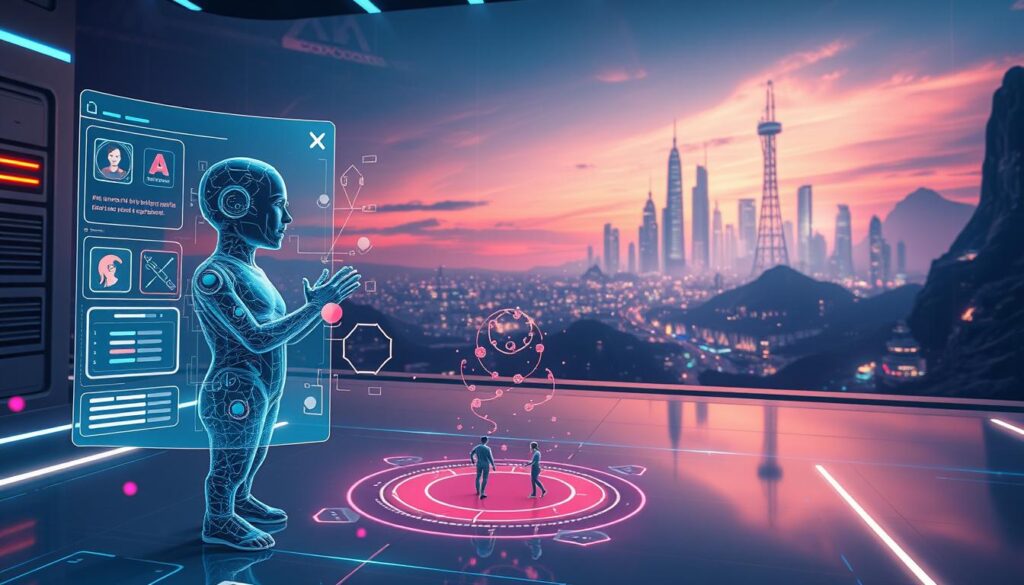
User profiles and preferences
Profiles combine purchase history, browsing signals, and stated preferences to surface pieces that match a collector’s taste.
Algorithms score users against catalog traits to recommend drops, bundles, or secondary-market picks.
Adaptive, interactive assets
Machine learning can drive visuals or utilities that change with use. Items evolve based on time, activity, or external feeds.
Examples include time-based transformations, performance-triggered upgrades, and oracle-linked state changes.
Personalized storytelling and marketing
AI assembles backstories, dynamic lore, and context that connect art to users across channels.
- Creator capabilities: modular systems generate series with controlled variation while keeping brand identity.
- Data stewardship: privacy-preserving opt-ins ensure trust when using behavioral data.
- Marketing benefits: segmented campaigns, loyalty rewards, and dynamic reveals from insights increase retention.
| Feature | How it helps | Example |
|---|---|---|
| Profile-driven drops | Better discovery | Curated collections by taste |
| Adaptive visuals | Long-term engagement | Level-up traits after use |
| Personalized lore | Emotional connection | Story arcs tied to owner actions |
Practical tip: test personalization in small cohorts to avoid overfitting and keep replay value high for collectors who trade and showcase nfts.
AI platforms that extend NFT capabilities beyond creation
Several specialized services now add interactivity, on-chain inference, and data markets that turn static collectibles into functional digital assets.

Alethea AI
iNFTs embed conversational and interactive behaviors into tokens. Owners can chat with, evolve, or personalize items. This unlocks gating, gamification, and new utility for collectors.
Cortex
On-chain models enable inference inside contracts so dApps and smart contracts react to inputs transparently. This supports gameplay logic and auditable decision-making.
Ocean Protocol
Ocean offers tokenized data markets with privacy-preserving compute. Creators sell access to datasets without revealing raw files. That model helps monetize research and training data for art and asset pipelines.
SingularityNET
SingularityNET provides decentralized services for image processing, language, and recommendations. Developers plug these services into ecosystems to add features quickly and pay via tokens.
Deployment notes: design choices around fees, throughput, and storage shape product decisions. Hybrid designs keep heavy models off-chain to cut latency and cost while keeping critical logic auditable on-chain.
| Service | What it adds | Primary use case | Notes |
|---|---|---|---|
| Alethea AI | Interactive tokens | Conversational collectibles, gating | Enhances engagement and utility |
| Cortex | On-chain model execution | Smart contract-driven gameplay | Transparent, auditable inference |
| Ocean Protocol | Tokenized data & private compute | Data monetization for creators | Protects raw files during access |
| SingularityNET | Decentralized AI services | Image, language, recommendation APIs | Composable and pay-as-you-go |
Valuation and market insights powered by AI
Forecasting in the nft market uses layered datasets to surface momentum, seasonality, and outliers that matter to investors.
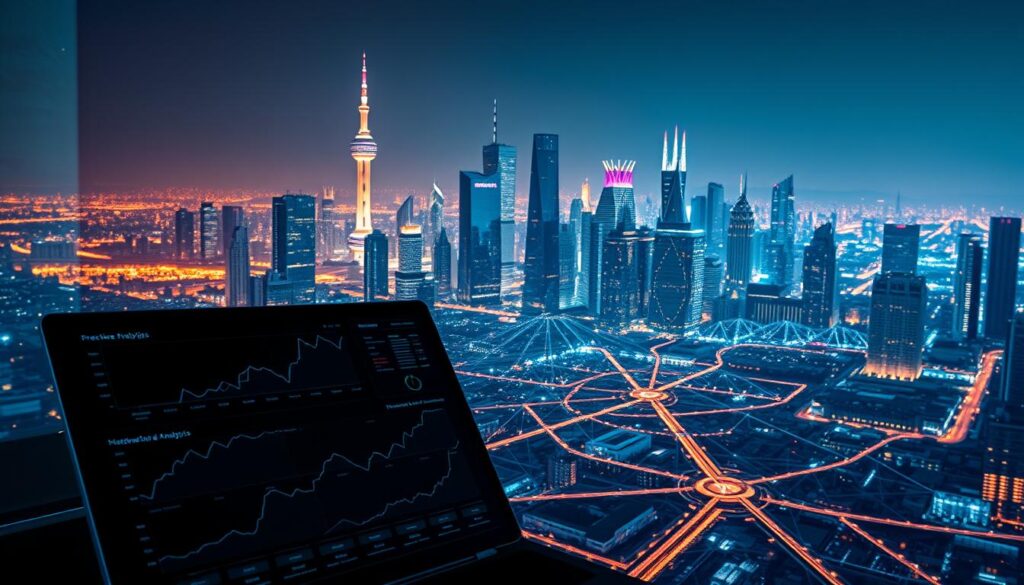
Predictive analytics for market trends, pricing, and investments
Workflows merge sales history, listings, and social signals into models that forecast price moves. Teams ingest large datasets and tune features like artist reputation, rarity, drop mechanics, and demand velocity.
These systems deliver actionable insights for entries and exits. Visual dashboards highlight collection-level dispersion, momentum, and short-term sentiment swings.
Historical data analysis and visualization to guide strategy
Visualization tools turn raw data into strategy. Charts reveal seasonality, holder concentration, and liquidity depth so investors can size positions and control risk.
Anomaly detection flags wash trades or inorganic demand, supporting stronger fraud detection and cleaner pricing signals.
- Backtest playbook: validate models across art, gaming, and collectibles before allocating funds.
- Operational guardrails: monitor model drift, set refresh cadence, and enforce error budgets.
| Use case | Data inputs | Investor action |
|---|---|---|
| Price forecasting | Sales history, sentiment, rarity | Entry/exit timing |
| Anomaly detection | Transaction patterns, holder moves | Flag for review, avoid trades |
| Portfolio sizing | Velocity, liquidity depth | Position calibration, risk limits |
Fraud detection and risk controls for NFTs using AI
Trust teams use layered checks to protect creators, buyers, and marketplaces. Visual forensics and on-chain verification work together to detect copied works and suspicious market moves.
Counterfeit detection: images, metadata, and provenance
Image-matching algorithms compare pixel-level features and style vectors to find copies across sites and social feeds.
Metadata checks cross-verify creator names, timestamps, and token IDs against chain records to confirm original mints.
Provenance analysis ties file hashes to wallet histories so teams can trace ownership and spot forgeries.
Anomaly detection: transactions, behavior, and scoring
Models flag unusual transactions such as sudden price spikes, circular flows, or synchronized bids that hint at market manipulation.
Behavioral analysis links wallets to reveal coordinated activity, rapid flipping, and multi-account patterns used in wash trading.
Risk scoring blends seller reputation, listing velocity, rarity, and historical signals to prioritize manual review and automated holds.
- Consolidated data pipelines feed marketplace and chain telemetry into dashboards and real-time alerts.
- Transparent blockchain technology enables audit trails to support dispute resolution and restitution where needed.
- Periodic model audits and false-positive reviews keep controls accurate and minimize friction for legitimate creators and collectors.
| Control | Core check | Outcome |
|---|---|---|
| Image matching | Pixel & style comparison | Detects copied art |
| Metadata & provenance | Chain cross-checks | Confirms origin |
| Anomaly detection | Transaction & behavior patterns | Flags manipulation |
How to choose an AI NFT platform based on your goals
Define the outcome first. Do you want one-off art, large collections, interactive items, or on-chain utilities? Pick a service that maps to that goal.
Compare core features such as model quality, prompt controls, upscaling, batch rendering, and commercial rights. Check marketplace integration and mobile workflows if you iterate on the go.
Investors and teams should verify uptime, export formats, metadata handling, and royalty standards. Also weigh support and throughput when planning drops.
Factor in analytics and creator dashboards for A/B testing and discovery. Capture ideas in a short creative brief with prompts, references, and file specs so outputs are mint-ready.
| Service | Best for | Cost model | Notable feature |
|---|---|---|---|
| DeepAI | Customizable realism & stylized work | Subscription / per-use | Fine color & texture controls |
| NightCafe | Mobile creation & style transfer | Credits / free tier | 40+ styles, mobile-friendly |
| DALL·E | Flexible edits and concept blending | Credit pack (paid) | Powerful inpainting and variations |
| StarryAI | Rapid prototyping for nfts | Free & paid tiers | VQGAN-CLIP quick experiments |
Quick checklist: match platform capabilities to your use cases, test features with small batches, and record preferences that help repeatable creation of quality nfts and nfts-ready assets.
Where AI and NFTs are heading next
Where this field goes next will center on tighter links between on-chain code and adaptive models so tokens act like live services.
Expect dynamic nfts that change with user input, oracles, and market trends, and smart contracts that invoke models for real-time logic.
Data marketplaces and decentralized services will feed creative pipelines and predictive analytics, improving pricing signals for investors and traders alike.
Standardized provenance, clear royalty features, and cross-market compatibility will reduce friction for creators and help digital assets travel freely.
Practical step: build data pipelines, test model-led creation workflows, and harden security so your assets scale with the next cycle of the nft ecosystem.


